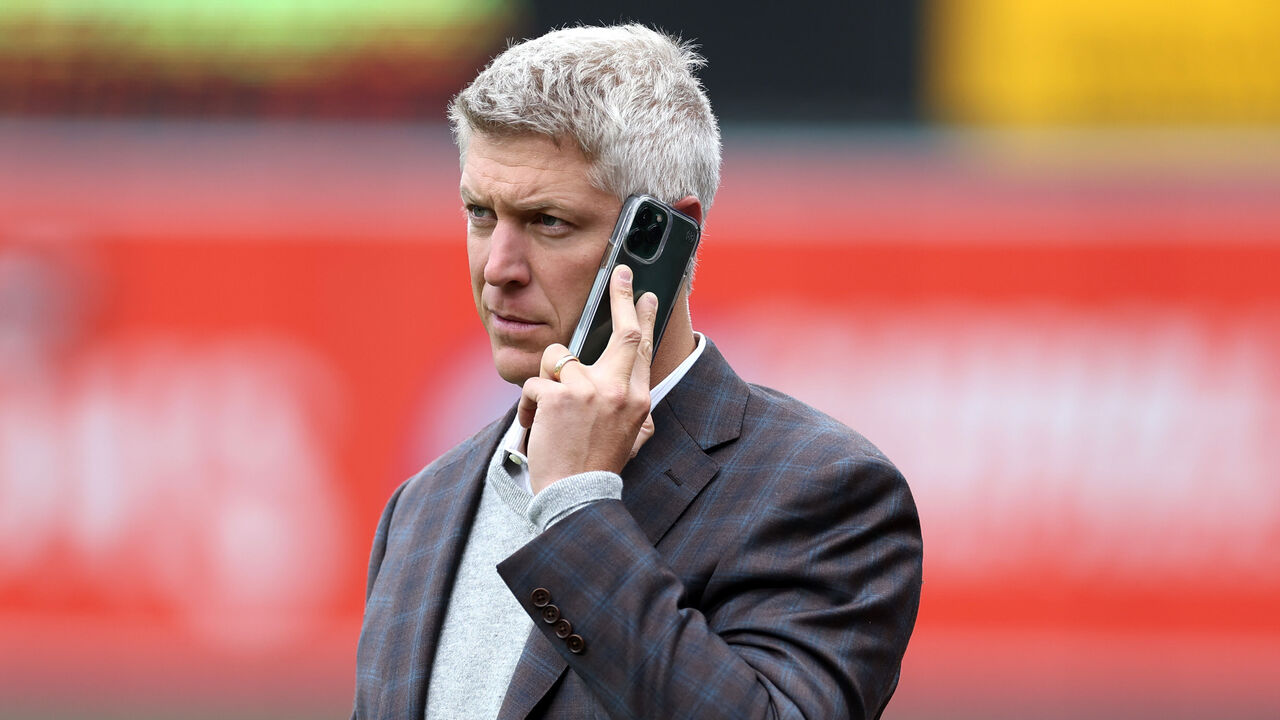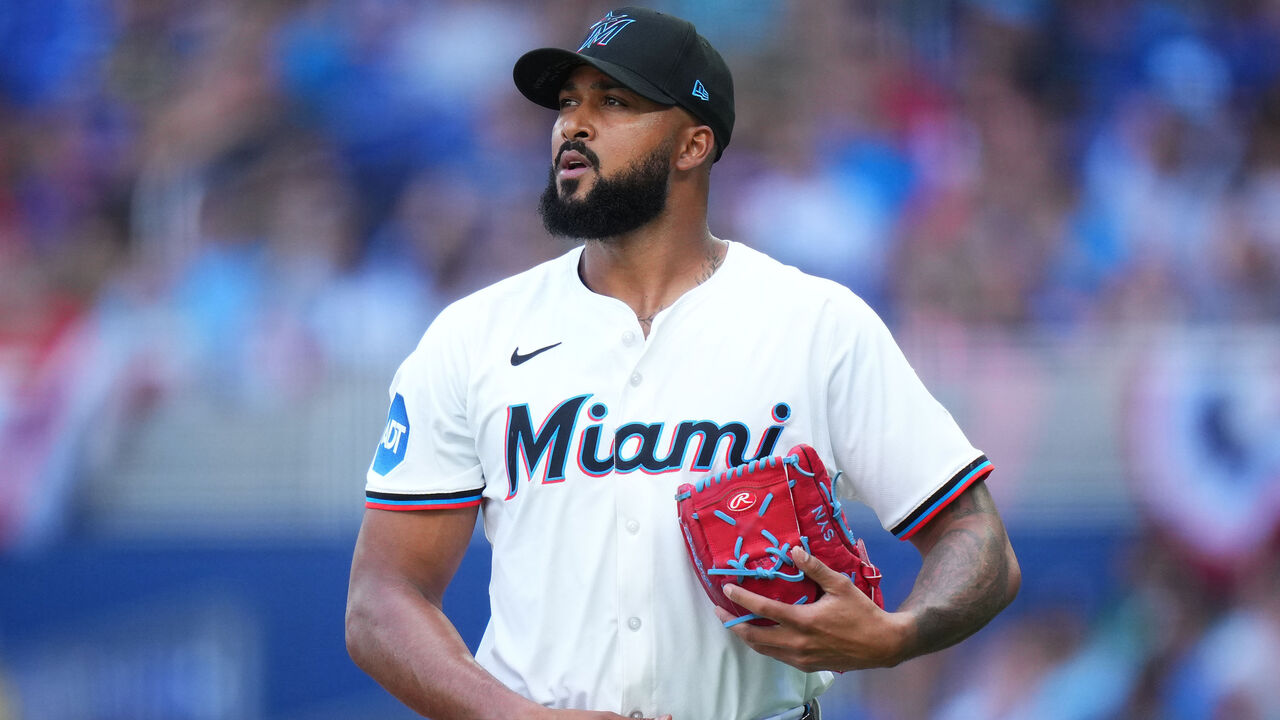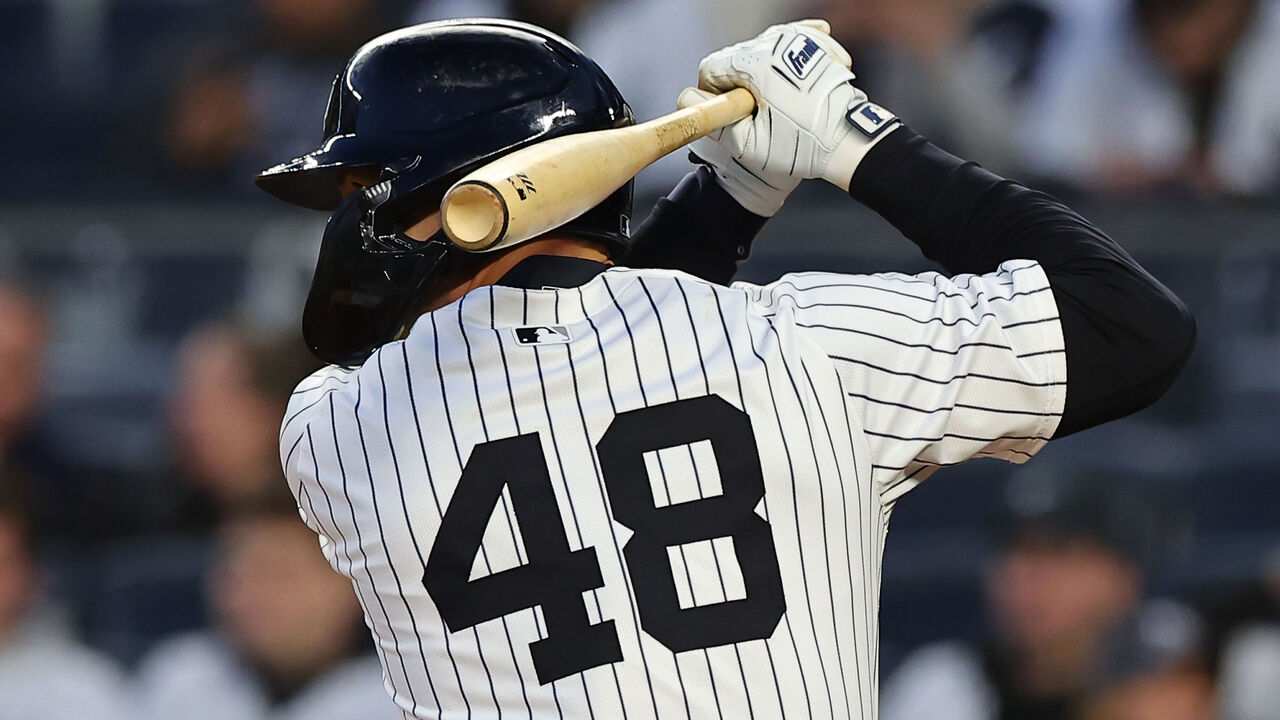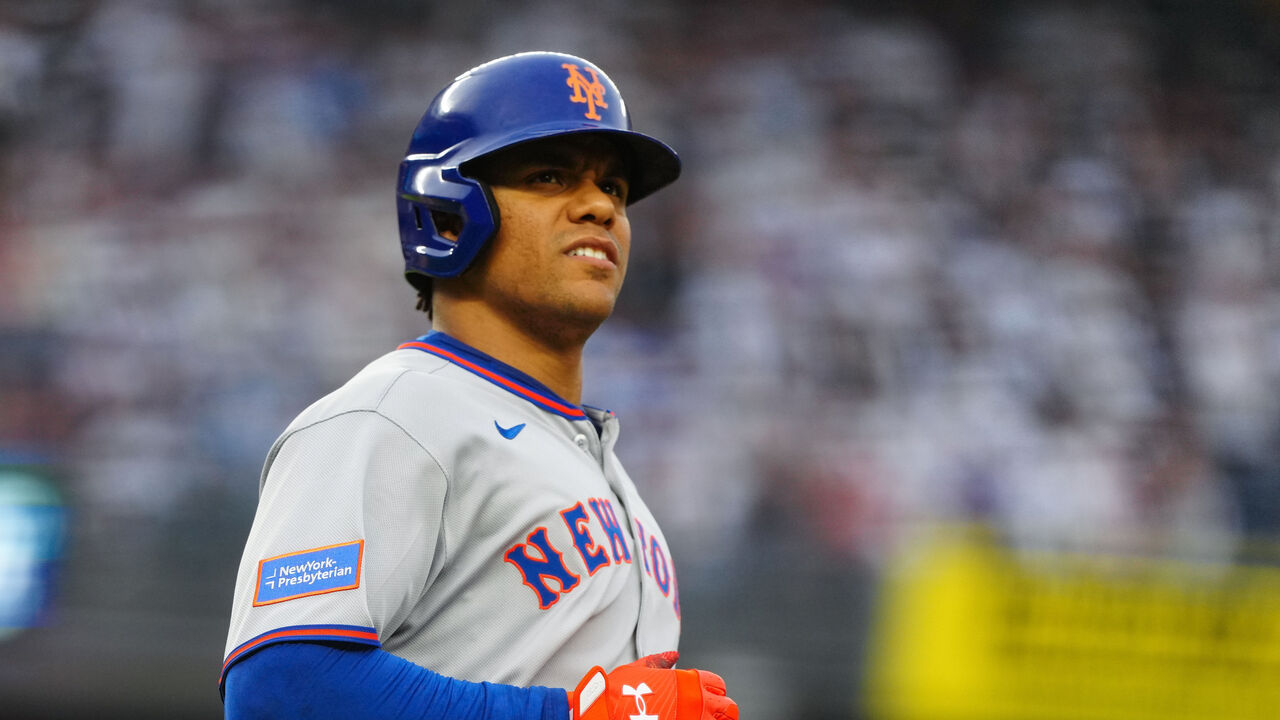The O's next moves, Alcantara's value, and 7 more MLB thoughts
Starting Lineup is a collection of reporting, observations, and insights from the baseball beat.
Leading off ...
Colorado may be the worst team in baseball, but the Baltimore Orioles are the most disappointing.
Following 192 wins over the last two seasons and consecutive playoff appearances, the Orioles' trajectory seemed to be pointing up still. Even with some pitching concerns and playing in the usually rugged American League East, Baltimore came into the season with a coin-flip chance of returning to the postseason, according to FanGraphs' projections.
After collecting just 19 wins in the first third of the season, the Orioles are just above 1% in playoff probability. There's a good chance they'll be sellers ahead of the trade deadline.
They might do well to accept that and be early to move players on expiring contracts, like outfielder Cedric Mullins, who will have a healthy market (Phillies and Guardians are among the fits), and a pitcher, such as Zach Eflin, who's a rest-of-season rebound candidate. Making deals now can help the Orioles bounce back in 2026 and beyond.
The depth of Baltimore's poor play, which got manager Brandon Hyde fired, might tempt some to think they should make some extreme changes, but they don’t need to blow it all up.
It didn't help that Gunnar Henderson began the season injured, Colton Cowser broke his hand in the first week, and Jordan Westburg strained his hamstring in April. They were expected to be above-average regulars. Perhaps most concerning among the position players is the mysterious, months-long slump of franchise cornerstone Adley Rutschman. On the pitching side, Grayson Rodriguez's continued injury woes have removed a potential top-of-the-rotation arm.

Certainly, the baseball leadership group is not without fault.
Last year's disastrous trade with Miami for Trevor Rogers cost them Kyle Stowers and Connor Norby, who have been effective contributors for the Marlins.
The front office followed that with an offseason in which they allowed ace Corbin Burnes to leave as a free agent and added low-ceiling, retread pitchers Charlie Morton and Kyle Gibson, among others.
No general manager determines payroll, of course. If Orioles fans are upset that nine-figure guarantees haven't been given to an ace starting pitcher, those concerns should be directed to second-year owner David Rubenstein. But it's fair to question the trades made, how payroll was allocated - their greatest offseason investment, Tyler O'Neill, has a lengthy injury history - and why there wasn't more urgency this winter.
The Orioles have made mistakes they can learn from. But pushing for total regime change? Well, be careful what you wish for.
The Orioles were basically the Rockies a few years ago. They didn't try to execute a quick rebuild but instead retooled their player development practices and modernized their technologies and processes. Many teams would love to have the Orioles' base of talent and internal infrastructure.
GM Mike Elias and his group deserve a mulligan. They've had a bad 10 months, but it shouldn't erase what they've done.
No. 2: Trade chip gone stale
Sandy Alcantara was expected to be among the top players available at this year's trade deadline because it makes little sense for the rebuilding Marlins to hang onto the former Cy Young winner. The problem? Alcantara has the worst ERA in the majors (8.47) among arms to have tossed at least 50 innings.
What's perplexing about Alcantara is that his Stuff+ score of 108 is just slightly below his career mark (110). His pitches have about the same velocity and movement they had before his Tommy John surgery.
However, his command has gone AWOL, which can happen to pitchers returning from a significant injury.
While his rate of pitches in the middle of the zone (27.5%) is only slightly increased from 2023 levels (27.2%), his non-competitive pitches, described as "waste" by MLB's Baseball Savant, are up to 7.6% this season compared to 5% in 2023. His walk rate has skyrocketed to 5.12 per nine innings from a career mark of 2.86.

He's failed to get ahead in counts with the lowest first-pitch strike percentage of his career - below 60% for the first time - which has led to less favorable counts and far less chase. His chase rate had been elite (97th percentile in 2023) but is in the 14th percentile this season.
He's also been unlucky, as the difference between his actual ERA (8.47) and expected ERA (5.32) is the greatest in the majors among pitchers who have thrown at least 40 innings.
Alcantara may just be a few adjustments from returning to form. Whether he recaptures it is a big deal for this summer's deadline.
No. 3: A masterclass in responsibility
Accountability is often lacking in pro sports. Take, for example, when Juan Soto earlier in May instructed folks not to believe their own eyes by saying he's "been hustling pretty hard."
So, it was refreshing to hear Spencer Strider's response after failing to complete five innings in his first start back from an IL stint on May 20. Asked if it felt good to rejoin the rotation, Strider answered:
"I don't think that's the mentality. I don't enjoy failing and certainly not at the expense of the team. We sent a pretty good guy down that was supposed to pitch in my spot. That's not lost on me. … If I can't be better, I don't need to be out there."
It's not often you hear a player return from a rehab assignment and mention the player (Bryce Elder) who was demoted for him.
No. 4: The outlier extension candidate
Managers avoid having their left-handed batters face left-handed pitchers as often as they can. The Yankees lead the American League with 12 left-on-left home runs.
The Phillies lead the National League with 16, and 10 of them have come from Kyle Schwarber.
Schwarber is off to an excellent start. He's one of those best-shape-of-his-life stories that's actually legit.
462 FT later ... and now Kyle Schwarber is just a double shy of the cycle 👀 pic.twitter.com/ZV7ZvTixIq
— MLB (@MLB) April 9, 2025
He's cut his strikeout rate to a career-low 23%, and his wRC+ entering play Friday would be a career best (165) if it holds for the season.
The Phillies are interested in extending the 32-year-old. Investing in aging slug-first players can often be a losing proposition, but Schwarber is getting better, and his underlying numbers, such as bat speed and swing decisions, remain elite. He might be an outlier.
No. 5: The Yankees' sneaky upgrade
The Yankees were unable to re-sign Soto but remain one of the winners of the offseason.
Max Fried is dominating and the acquisition of Cody Bellinger is trending toward being a win (120 wRC+, 1.5 fWAR to date). They're also enjoying one of the steals of the offseason in signing the resurgent Paul Goldschmidt (.899 OPS) on a one-year deal.

Last year, the Yankees ranked 27th in fWAR from first basemen and 30th in wRC+ (71), some of the worst production in franchise history.
This season, they rank second in both categories (156 wRC+, 1.9 fWAR), trailing only the Los Angeles Dodgers. It's one of the greatest positional turnarounds in the sport.
No. 6: Solving the Red Sox puzzle
The slumping Red Sox have multiple short-term issues to resolve, but the big-picture issue is figuring out how the long-term pieces fit and building around them.
Rather than potentially hindering the development of uber-prospects Kristian Campbell, Marcelo Mayer, and Roman Anthony by moving them around to unfamiliar positions, they should be given priority at their primary positions.
That means Campbell should be locked in at second base, Mayer needs to reside at shortstop, and Anthony must grab an outfield role next to Wilyer Abreu and Jarren Duran. Ceddanne Rafaela (career 75 wRC+) would move into a utility role or become a trade chip.
No. 7: Stubborn Soto
Another alarming aspect of Soto's slow start is that his bat speed is down to 73.3 mph. While that's still well above the MLB average (73rd percentile), it's down from his mark of 75.4 mph last season (94th percentile). It's something to monitor.

One thing Soto has never been willing to do is adapt.
He's been an elite offensive performer, but it's remarkable to think he could be better. He still hits more balls on the ground than the air - bad for a power hitter with 17th-percentile sprint speed - and he doesn't often pull balls in the air (limiting his home-run upside).
He's pulling just 19.2% of the balls hit in the air - nearly half as much as the MLB average of 36.5%.
It brings into question how willing Soto will be to adapt when his skills slip. I'm not too worried about him in the near term; I think he'll acclimate to the Mets and return to form. I am worried about the 2030s version, however.
No. 8: No glove for the A's
The Athletics have some enviable young building blocks in Nick Kurtz, Jacob Wilson, and Mason Miller, but they've been hurt by a poor defense which ranks worse than every team but the Rockies in defensive runs saved (minus-34).
JJ Bleday was a major liability in center field and at the plate. He was demoted May 23 in favor of defensive-minded center fielder Denzel Clarke. But the results have been especially poor at third base, where the A's are trying to squeeze Miguel Andujar's bat into the lineup, and in left field, where Tyler Soderstrom is playing out of position to accommodate Kurtz.
Andujar, who broke in with the Yankees as a third baseman, hadn't played the position in the major leagues in four years and is already at minus-5 DRS in 134 innings (and is minus-34 DRS for his career).
With low-velocity lefties in the rotation, such as JP Sears and Jeffrey Spring, opponents more easily pull balls to the left side of the field. In fact, the A's have allowed the most pulled balls to left field (382 batted balls entering Friday - 50 more than the league average).
Their defensive mistakes are amplified by playing in a petrol can of a home venue in Sutter Health Park.
The A's are a prime example of why defensive-minded and versatile players have become prized.
No. 9: Leave the kids be
It was a week of surprising demotions for promising young players.
The Rays optioned Chandler Simpson to Triple-A on Friday despite him having a .285 average and 19 steals in 22 attempts over 35 games. The night before, he stole three bases.
On Monday, the Brewers sent down Logan Henderson (1.71 ERA in four starts) despite him being one of their best starters.
Perhaps these moves aren't about suppressing service time, although it's fair to be skeptical. For Henderson, it might be about preserving innings; for Simpson, it could be about wanting to see a better on-base percentage - his walk rate was about half the league average - and improved center-field defense.
But yanking prospects around is not without risk, including hits to confidence. There's also no certainty that reducing a pitcher's innings will allow him to avoid the IL.
Teams should stick it out longer with their prospects at the major-league level. These are the players fans want to see. These are the players with the greatest upside. How are players supposed to succeed at the MLB level without playing there?
Travis Sawchik is theScore's senior baseball writer.